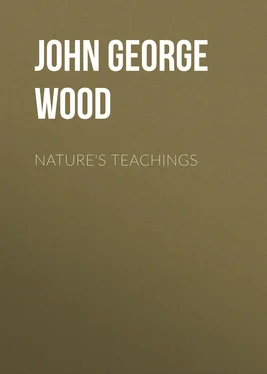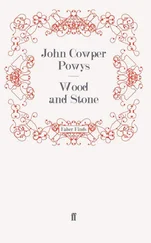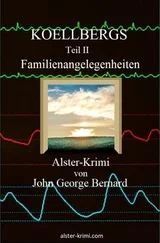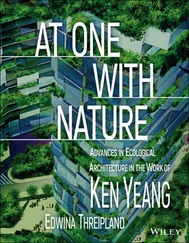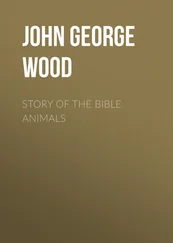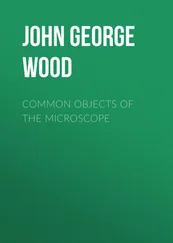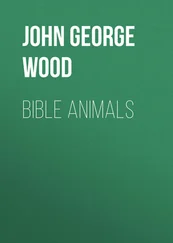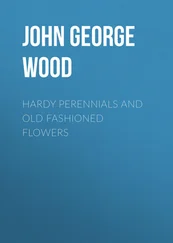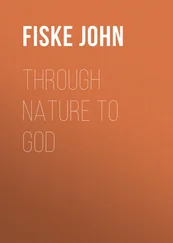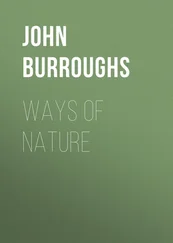John George Wood - Nature's Teachings
Здесь есть возможность читать онлайн «John George Wood - Nature's Teachings» — ознакомительный отрывок электронной книги совершенно бесплатно, а после прочтения отрывка купить полную версию. В некоторых случаях можно слушать аудио, скачать через торрент в формате fb2 и присутствует краткое содержание. Издательство: Иностранный паблик, Жанр: foreign_antique, Природа и животные, foreign_edu, на английском языке. Описание произведения, (предисловие) а так же отзывы посетителей доступны на портале библиотеки ЛибКат.
- Название:Nature's Teachings
- Автор:
- Издательство:Иностранный паблик
- Жанр:
- Год:неизвестен
- ISBN:нет данных
- Рейтинг книги:5 / 5. Голосов: 1
-
Избранное:Добавить в избранное
- Отзывы:
-
Ваша оценка:
- 100
- 1
- 2
- 3
- 4
- 5
Nature's Teachings: краткое содержание, описание и аннотация
Предлагаем к чтению аннотацию, описание, краткое содержание или предисловие (зависит от того, что написал сам автор книги «Nature's Teachings»). Если вы не нашли необходимую информацию о книге — напишите в комментариях, мы постараемся отыскать её.
Nature's Teachings — читать онлайн ознакомительный отрывок
Ниже представлен текст книги, разбитый по страницам. Система сохранения места последней прочитанной страницы, позволяет с удобством читать онлайн бесплатно книгу «Nature's Teachings», без необходимости каждый раз заново искать на чём Вы остановились. Поставьте закладку, и сможете в любой момент перейти на страницу, на которой закончили чтение.
Интервал:
Закладка:
A section of one of these masts is given at Fig. B, and taken from the drawings of one of our largest engineering firms. The reader will see that the mast is composed of rather slight material, and that it is strengthened by four deep though thin ribs, which run throughout its length.
When I first saw this mast I was at once struck with the remarkable resemblance between it and the quill of the Porcupine. These quills, as all anglers know, are very light, and of extraordinary strength when compared with their weight. Indeed, they are so light that they are invaluable as penholders to those who are obliged to make much use of their pen. I have used nothing else for a very long time, and the drawing of the Porcupine quill which is here given at Fig. A was made from a small piece cut from the top of the penholder which I have used for some fifteen years, and with which all my largest and most important works were written, including the large “Natural History,” “Homes without Hands,” “Man and Beast,” &c., &c. A portion of the same quill is also shown of its real size.
If the reader will cut a Porcupine quill at right angles, make a thin section of it, and place it under the microscope, or even under an ordinary pocket lens, he will see that the exterior is composed of a very thin layer of horny matter, and the interior filled with a vast number of tiny cells, which are formed much on the same plan as the pith of elder and other plants. The analogies of the pith will be treated in another page.
But were the quill merely a hollow tube filled with pith, it would be too weak to resist the strain to which it is often liable. Consequently it is strengthened by a number of internal ribs, composed of the same horny material as the outer coat, and arranged in exactly the same way as those of the mast.
There are yet other points in the structure of the Porcupine quill which might be imitated with advantage in the mast. In the first place, the internal ribs are much more numerous than those of the mast, but they are very much thinner, and taper away from the base, where the greatest strain exists, to the end, where they come to the finest imaginable edge. This modification of structure enables the outer shell of the quill to be exceedingly thin and light, and, moreover, gives to the whole quill an elasticity which is quite wonderful, considering its weight and strength.
Then, in the iron mast the exterior is quite smooth, whereas in the Porcupine quill it is regularly indented, exactly on the principle of the corrugated iron, which combines great strength with great lightness. And I cannot but think that our iron masts might be made both lighter and stronger if the shell were thinner, the internal ribs made like those of the Porcupine quill, and the shell corrugated instead of being quite smooth. The internal cells of the quill are, of course, not needed in the mast, as they are intended for nutrition, and not for strength.
Being on this subject, we may take the shape of the Porcupine quill, and compare it with that of the ship’s yard. It will be seen that the two are so exactly similar in form that the outline of one would answer perfectly well for the other. The only perceptible difference is, that in the ship’s yard both ends are alike, whereas in the Porcupine quill the end which is inserted in the skin is rounded and slightly bent, while the other end is sharply pointed.
The principal point to be noticed in the form of both quill and yard is, that they become thicker in the centre, that being the spot on which the greatest strain comes, and which, in consequence, needs to be stronger than any other part. While holding and balancing the pole which Blondin uses to preserve his balance when walking on the high rope, I was struck with the fact that the pole, which is heavily weighted at each end, had to be strengthened in the middle, exactly on the principle of the Porcupine quill and the ship’s yard. It could not, of course, be thickened, as the hands could not grasp it, but it had to be furnished with additional strengthening. And the necessity of such strengthening is evident from the fact that on one occasion the pole did break in the middle, so that any one of less nerve and presence of mind must have been killed.
Bearing in mind, then, that in a rod or pole the centre is the part which most requires to be strengthened, we can see, in cases too numerous to mention, how art has followed, though perhaps unconsciously, in the footsteps of nature. Take, for example, the beam of a steam-engine, such as is given in the sketch, and for which the great engine at Chatham acted as model. The reader will observe that in this case the beam is gradually thickened towards the centre, the ends, where the strain is slightest, being comparatively small.
Another point also must be noticed. Equal strength could have been obtained had the beam been solid, but at the expense of weight, and consequent waste of power. Lightness is therefore combined with strength by making the beam consist of a comparatively slight centre, but having four bold ridges, as shown in the section given in the accompanying illustration. This plan, as the reader will see, is exactly the same as that which is adopted in the iron mast and porcupine quill, except that the ridges are external instead of internal. The same mode of construction is employed in ordinary cranes, the principal beam of which is almost identical in form with that of the engine, both being thickest in the centre, and both strengthened with external ridges.
There are also other analogies between the hollow mast and natural objects. Keeping still to the animal world, we find the quill feathers of the flying birds to supply examples of the combination of great strength with great lightness and very little expenditure of material. Their wing bones, too, are hollow, communicating with the lungs, and are consequently light as well as strong.
Passing to the vegetable world, we find a familiar example of this structure in the common Wheat Straw. The ripe ear is so heavy, when compared with the amount of material which can be spared to carry it, that if the stalk were solid it would give way under the mere weight of the ear. Moreover, the full-grown corn has to endure much additional weight when wetted with rain, and to resist much additional force when bowed by the wind, so that a slight and solid stalk would be quite inadequate to the task of supporting the ear.
The material of the stalk is therefore utilised in a different manner, being formed into a hollow cylinder, the exterior of which is coated with a very thin shell of flint, or “silex” as it is scientifically termed. The result of this structure is that the stem possesses strength, lightness, and elasticity, so as to be equal to the burden which is laid upon it.
Then there is the common Bamboo, which is little more than a magnified straw, being constructed in much the same manner, and possessing almost the same constituents of vegetable matter and silex.
Perhaps the most extraordinary of the tubal system is to be found in the remarkable plant of Guiana called by the natives Ourah, and scientifically known by the name of Arundinaria Schomburgkii . Like the bamboo, it grows in clusters, and has a feathery top, which waves about in the breeze. But, instead of decreasing gradually in size from the base upwards, the Ourah, although it runs to some fifty feet in height, is nowhere more than half an inch in diameter. The first joint is about sixteen feet in length, and uniform in diameter throughout.
It is scarcely thicker than ordinary pasteboard, and yet so strong and elastic is it, that it can sustain with ease the weight and strain of its feathery top as it blows about in the breeze. The natives of certain parts of Guiana use this reed as a blow-gun, and I have a specimen, presented to me by the late Mr. Waterton, which is eleven feet in length.
Читать дальшеИнтервал:
Закладка:
Похожие книги на «Nature's Teachings»
Представляем Вашему вниманию похожие книги на «Nature's Teachings» списком для выбора. Мы отобрали схожую по названию и смыслу литературу в надежде предоставить читателям больше вариантов отыскать новые, интересные, ещё непрочитанные произведения.
Обсуждение, отзывы о книге «Nature's Teachings» и просто собственные мнения читателей. Оставьте ваши комментарии, напишите, что Вы думаете о произведении, его смысле или главных героях. Укажите что конкретно понравилось, а что нет, и почему Вы так считаете.
